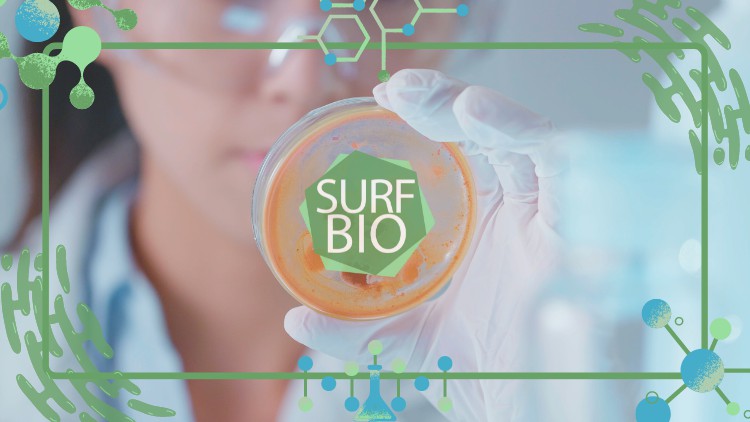
SURFBIO European project framework
What you will learn
Colloid Biology as a new scientific discipline
Cell-cell and cell-surface interactions
Advancing colloidal & surface biology with genomics
FAIR data management
Metabolomics for exploring cell-surface and cell-cell interactions
Advancing colloidal & surface biology with proteomics
OMICS data analysis and integration
Description
Microbes are often found in complex communities interacting with each other. Microbes also often grow attached to materials and interacting with the surface of the material. Understanding how microbes interact with each other and with the surfaces of the materials is important to develop new applications to, for instance, improve water treatment systems or prevent dental caries.
To understand these complex interactions we need information on the building blocks of life: DNA, RNA, proteins and small chemical molecules in the organism. We need to understand what type of biomolecules are present and how their abundance changes and for this we use Omics technologies, as they inform on the entire complement of each biomolecule.
In the SurfBio project we work to bring these approaches to the wide community of scientists willing to study cell-cell and cell-surface interactions. In this MOCC we have prepared chapters dedicated to i)genomics, ii)transcriptomics, iii)metabolomics and iv)proteomics dedicated to each of these technologies. In addition, we have prepared a chapter on v) integration of omics data, with statistical approaches to combine data from multiple levels and a final chapter where we advise on vi)data management using FAIR principles.
Omics technologies require combining experimental (wet) approaches for sample generation and computational (dry) methods for data analysis. Therefore the chapters in this MOOC contain a video describing the key elements and are complemented with hands-on computer practicals to illustrate the key steps in the computational analysis. As additional material we recommend the review we have prepared on “Advances in experimental and computational methodologies for the study of microbial-surface interactions at different omics levels” González-Plaza, Furlan et al. 2022[1]
We hope the videos, tutorials and bibliographic material we have prepared helps you analyze your favorite microbes in interaction with each other and with surfaces.
SURFBIO project has recieved funding under the European Union’s Horizon 2020 Research & Innovation programme under grant agreement Nº 952379.
Content